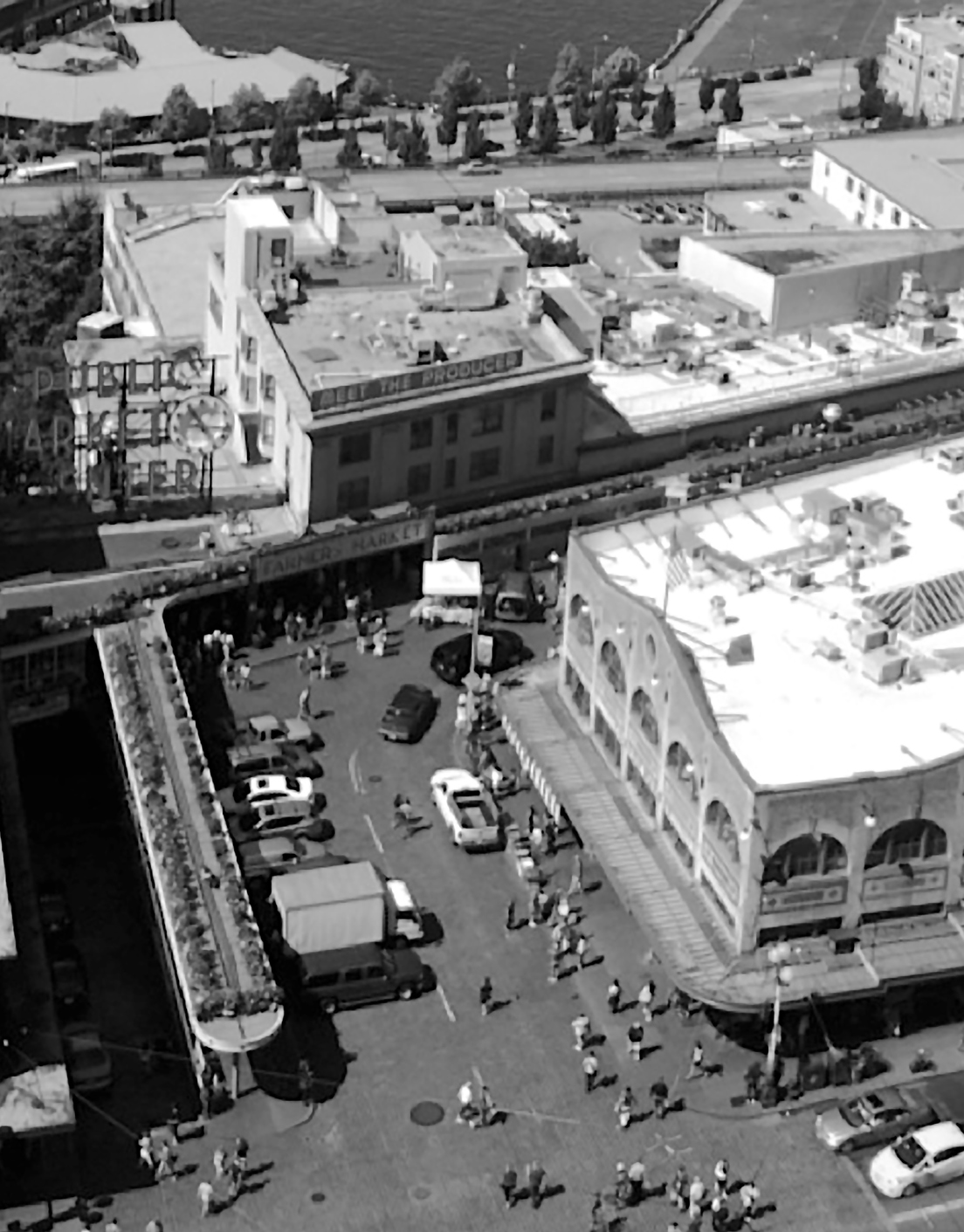…Along the active edges of a Pedestrian Sanctuary, where the demand for market centers is significant, and transit service and mobility are highest, create integrated complexes of buildings that serve as market centers.

__Problem-statement: Shopping is one of the most fundamental activities of daily life, and it should be accessible, convenient, safe and attractive. It should not be allowed to destroy the quality and pedestrian scale of the surrounding neighborhood.__
Discussion: Too often, shopping centers have been allowed to grow monstrous, and create urban dead zones at their edges: parking lots, concentrated vehicular arterials, and other disruptions. This is unnecessary. A market center can be successfully integrated with the surrounding pedestrian fabric, by providing multiple blocks connected by subterranean levels and bridges.
The original plan for shopping “malls” came from the architect Victor Gruen, who was — ironically — seeking to reproduce the car-free ambience of European village squares. Of course, nearby residents pay a heavy price, for the edges of these inward-turning megastructures draw the life from their surroundings, and create large dead zones within the urban fabric — either ugly and unecological parking lots, or inactive streets, or both.
The final irony is that enclosed shopping malls are becoming much less popular, and buyers increasingly crave real streets with vibrant activities. In response, some shopping mall developers have created “lifestyle malls” built around open streets, only some of which are pedestrian-only. This is a step in the right direction — although any market center will thrive on adjacency and mix, rather than a segregated monoculture of whatever kind.¹

Left, a typical shopping “mall” outside of Portland, Oregon, surrounded by an ocean of parking lots. Right, an integrated shopping center with similarly large stores, but integrated into the surrounding urban fabric of downtown Portland. Multiple blocks are connected by bridges and tunnels. Parking is accommodated with garages built into the urban fabric, and many people arrive by transit, walking or bike.
The problem is not simply that malls have roofs (typically of glass). Indeed, some of the most successful and well-loved market centers in the world have glazed roof enclosures, among them the Galleria Vittorio Emanuele in Milan, Italy. So do many city-operated market centers. The important factor is the connectivity of the center to its surrounding urban fabric, and its mix of lively activities at many hours of the day.
__Therefore: Do not build gigantic, isolated shopping “malls”, which are cut off from the urban fabric surrounding them, and damaging to it. Instead build lively market centers, allowing different buildings to span over (or even under) the street network.__

Assure that the edges of the centers have a Walkable Streetscape. Articulate these spaces, and the spaces within, with a Place Network…
notes
¹ See for example Southworth, M. (2005). Reinventing main street: From mall to townscape mall. Journal of Urban Design, 10(2), 151-170.
See more Special Use Patterns